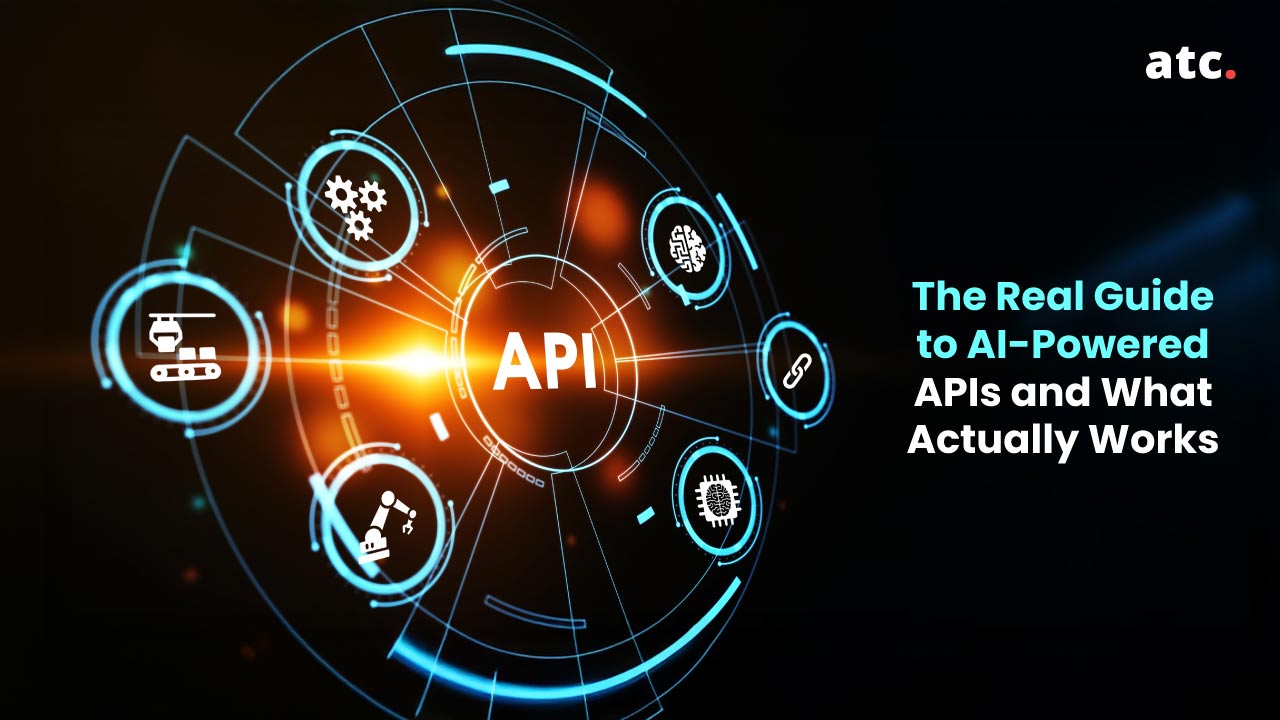Subscribe to the blog
Scrum is a precise framework that helps project teams to work in an organized style. It inspires and boosts teams to explore diverse experiences. It helps structure a team while working on a project and guides their wins and losses.
While software development teams most regularly utilize the Scrum we are discussing, its guidelines can be used for all sorts of teamwork. This is one of the most significant reasons why Scrum is so prevalent.
Most frequently applied as an agile project management framework, Scrum involves a set of technology tools, interactive meetings, and specific roles that work parallelly to help with team structure and organize project activities.
This blog will discuss Scrum teams and if the Scrum methodology is right for your team. It will help you decide on opting for the Scrum framework. We will also look at how Scrum fundamentals fit the project requirements.
What is Scrum methodology?
Scrum methodology is used to manage the different moving parts of a specific project. The method works effectively for small-sized teams handling projects with altering deliverables, indefinite solutions, and involvement of recurrent communication with users and clients.
Scrum methodology works on cumulative and reiterative stages of production to develop products swifter and with more regularity. Scrum is the precise approach to eliminate the tight controls of out-of-date project management. It helps set free a team’s inventiveness to enable quick transformations needed by a client.
By facilitating project teams to think as they reiterate, Scrum steers better feature and functionality prioritization. It helps organize functionalities and set objectives for precise deliverables that the project team works on in small sprints. With this approach, the most significant work gets executed first.
Let us explore the Scrum procedure with diverse Scrum roles to check if this method is fitting your team or not.
Key gains from Scrum:
Enabling a new project management methodology for your team will come with issues. However, Agile Scrum provides an essential set of benefits that you can use to empower your team and stakeholders involved when you switch. It offers the following advantages:
- Competence - Any Agile process works more competently and effectively, and when your project team follows Agile Scrum successfully, you will see those positive outcomes.
- Flexibility - Agile Scrum projects incorporate recurrent upgrades, so if a project requires alteration, it won’t deteriorate for weeks before it is noted. You will be able to spot a challenge or essential variation and move swiftly without trailing weeks of activities. What’s more, your project sees constant enhancement over its lifecycle rather than an uncommon period of immense transformation.
- Prominence - With Agile Scrum, the stakeholders involved can see a project’s evolution throughout its lifecycle compared to traditional methods. They feel more engaged with Scrum, as does the complete team, letting every team member work in partnership and watch the entire journey of the project.
What best describes a Scrum team?
For initiating the use of the Scrum methodology for your projects, there are vital roles that need to be allotted: the product owner, the Scrum Master, and the development team.
Let us see what best describes a Scrum Team and explore Scrum roles to check if Scrum project management methodology is the right fit for your team.
A) Product owner
The product owner is a substitute for the client with effective approaches. He/she is responsible for keeping the best interest of the stakeholders in mind while managing the sprints and lining up the project backlog.
The precise role of the product owner is to direct the team and reassure open communication across all team levels. An effective product owner is well-organized and accessible to answer queries and offer precision throughout the project life cycle.
B) Scrum master
The Scrum master gets rid of barriers and allows handoffs were required to keep the sprint running seamlessly.
A critical difference between a Scrum Master and a conventional project manager is that the former does not provide a highly detailed path to the project group. At the commencement of a project, the Scrum master and product owner meet to arrange priorities of the features and establish the sprint.
C) Scrum development team
The rest of the members in a Scrum are part of the scrum development team who are responsible for implementing the project deliverables. All the team members who build the product are on the development team, comprising coders, designers, writers, quality assurance executives, and testers.
In Scrum, the development team is independent, and each member works mutually to execute every sprint. The scrum development team must plan amongst themselves how to best achieve the project deliverables.
After the roles have been decided and enabled, the product owner and the Scrum master would host meetings in successions. They will further plan and identify the features needed to complete the project successfully.
Enabling three steps of the Scrum process
During every two-week sprint, the Scrum process incorporates these three tasks or activities, so that the team has the essential points on the project to interact and communicate.
Let us explore this precise Scrum process to check if Scrum’s project management methodology is the right fit for your team.
1) Planning of sprint
Before any work can be initiated, the Scrum team must meet to line up product features and build a product backlog. The product backlog is an activity list the group decides to execute in an allotted sprint. The planning of sprint aims to bring solutions to two queries:
a) What features can we successfully provide in this Sprint?
b) How will we work to attain these deliverables?
You can enable planning for the sprint utilizing Scrum software; however, your planning document should have openings to be updated as required. Leveraging Lucidchart, you can effortlessly map out and visualize the project activities you plan on executing. Addedly, your entire group can edit the plan and team up on a real-time basis.
2) Daily Scrum meeting
A daily Scrum meeting is conducted to discuss the previous day’s tasks, talk about hang-ups, and define what work will be executed that day. Every team member updates the whole group on what activities they have been involved in and brings up any challenges or queries. Preferably, a regular Scrum meeting should not surpass 15 minutes of total discussion time.
3) Sprint evaluation and reconsideration
A sprint characteristically lasts around two weeks, and after that, the team meets to assess advancement and progressions. For augmenting the subsequent sprint, the group gathers responses and feedback on the worked-upon features.
While reviewing the sprint, all the three parts of the team and stakeholders evaluate what they have attained across the sprint matched to what they have envisioned to achieve. This meeting may cover a demo of the product for the client and stakeholders involved, and any essential alterations are further taken care of and implemented.
During a sprint retrospective meeting, the Scrum team reconsiders the sprint itself and evaluates what went well and what enhancements are needed across the process. The motive is to make the team more effective and agile over time.
Interactions must take the primary stage by the planning and evaluation procedures, as the Scrum methodology depends on team transparency to work perfectly. If and when challenges come up, team members should be prepared to finetune their course and line up objectives as required. As every iteration of the project is executed, and opinions are shared, the project roadmap is subject to variations.
Essential Scrum components to get you by your subsequent sprints
So, now that you have all the key players and set up the processes, let us explore the significant Scrum components that are involved in this iterative process to check if the Scrum project management methodology is the right fit for your team.
a) Product backlog:
Throughout the project lifecycle, the product owner will handle and deal with the product backlog. The product backlog is where all the product functionalities and features are precisely listed and lined up. The product owner is exclusively accountable for any alterations to the set prioritization of features involved.
b) Sprint backlog:
Within a precise sprint, the sprint backlog lists all the activities and tasks to be executed. The jobs are pulled from the product backlog, arranged in the sprint, and allocated to the development team for execution during the sprint. It is up to the development team to decide how best to execute the tasks.
c) Scrum board:
A Scrum board is utilized throughout the sprint to monitor progress on activities. It is classically divided into these columns:
- To-do tasks: Product features and tasks planned but not initiated so far
- In-progress tasks: Tasks that team members are presently dealing with
- Executed tasks: Tasks and activities that have been accomplished
You may add an extra column to showcase when a feature is in the quality testing phase to divide activities by team members further. Some team members might also add the product backlog to this document and pull the list every week.
With this pictorial, the complete team can see how the sprint is progressing and possibly move resources or alter the course if activities aren’t getting initiated on a timely basis.
d) Burndown charts
These charts are a visual representation of tasks still enduring in a sprint and should give team members a quick notification of the growth of the sprint. A burndown chart can be crafted using Scrum project management software.
5 Questions to help you in deciding on Scrum for your team
Q1) What are you looking to enhance?
Scrum teams are dedicated to planning and assessing projects better. Once the project work is divided into explicit sprints, the focus is on attaining and sustaining velocity for successfully executing the sprints.
Many other frameworks focus on enhancing current processes’ flow and efficiency levels without deeply varying the current workflow. They focus on finding new trends and refining the process with increments.
Are you exploring to transform your initial processes profoundly, or are you merely looking to enhance the visibility of tracking project progress and clear out challenges?
Scrum could be the correct choice if you believe that you need to spend more time planning your projects and moving your development procedures to a more iterative style of project deliverables.
Q2) How are your teams organized?
Scrum works better across a cross-functional team setting as you are needed to arrive at a demo-ready functionality at the end of each executed sprint. So, expertized teams face difficulties in entirely accepting Scrum.
On the other hand, a regular Scrum team could entail developers, designers, testers, a product owner, and a scrum master. This cross-functional team is created to be able to take care of comprehensive product delivery.
Additionally, Scrum needs teams to have members that have Scrum-related roles. The most significant of these are those of the product owner and the Scrum master. Also, the development team has to be specifically trained to fit in with their responsibilities.
So, you have to quickly decide on these specific team roles to check if the Scrum project management methodology is the precise fit for your team and organization.
Q3) How clearly planned and repeatable are your existing processes?
Scrum does not require much emphasis on the primary workflow but needs your product development process to be divided into precise sprints. If your project team or product does not fit a development lifecycle that involves a succession of sprints, you are likely to find it tough to enable or implement Scrum.
If your organization is taking up ad-hoc projects that necessitate different workflows, you might find it easy to enable Scrum efficiently.
Q4) How recurrently do you ship functionalities and features?
Scrum teams work in explicit sprints. Continuous deployment of functionalities can be tough to attain in a Scrum setting. This is primarily seen as products are frequently scoped down to reach demo-ready sprint goals. This often leads to teams crafting versions of functionalities and features that are clubbed mutually in project releases.
Many other project methodologies are designed to back constant deliveries. The emphasis of these frameworks is to endlessly deliver features and functionalities while trimming down the time taken for successful project deliveries.
Q5) How swiftly do you require to see project outcomes?
Scrum is intrinsically more complex compared to other more straightforward methodologies. The training and planning efforts that are required to allow for Scrum in an organization are pretty significant.
Scrum also requires expertized roles like the Scrum master and product owner, who demand to be separately hired or trained distinctly. Additionally, the culture of meetings prior to and after sprints will have to be gradually blended into the organizations. All this would take more time and financial investment to get it precisely done. Also, failures of Scrum implementations are commonly seen because of an entire overhaul of current processes.
Many other project methodologies concentrate on incremental alterations and modifications of the projects handled in your organization, and they can be executed quickly and need comparatively less investment.
Summary - Select Scrum today if
- You are looking to radically transform the approach your teams take for enabling software development and delivery.
- You sense that your teams are required to do an improved job of dividing down project work, assessing timelines, and releasing precise software solutions.
- Your teams are cross-functional, and you have the capacity to train them in Scrum.
- You can break down significant components of work into small-sized blocks and implement them as sprints.
- You feel your teams can allot more time for discussions and meetings. Planning evaluations may add outlays and strain timelines - but they are vital to making Scrum work.
- You have to invest precise time, effort, and resources to get it right as performance enhancements are seen after 3-4 sprints.
- Understanding procedures, getting effective at estimation, and assigning roles, all take time. Scrum may dissatisfy you if your goal is to see perfection right from day one.
Moving forward
So, the Scrum methodology is about a handful of professionals working mutually and proficiently to accomplish iterative work. Team members must be accessible for interaction and alliance throughout the sprint to most competitively using the Scrum methodology. Team members should also be ready to take on diverse roles to enable a working product to meet the set of sprint objectives successfully.
As a consequence, professionals who work remotely may find it challenging to contribute entirely to the procedure. However, using tools such as Lucidchart, you can keep your teams updated no matter where you execute your work.
As teams work through these practices and activities, it is vital to remember that the Scrum methodology is just one way to enable project management.
Successful leaders are asked a common question regarding whether they favor Scrum or conventional project management, and the answer is, it depends on the scenario. Similar to Leadership, it is about knowing what to execute and when depending on the problems and challenges.
So, is Scrum the right or the best methodology for you? To get an answer to this question, you should explore other project management tools and methods to identify the best fit for your upcoming development projects and your teams. At ATC, we innovate continuously, use precise project management methodologies and blend disruptive technologies to build ground-breaking solutions. Let’s connect and discuss your next enterprise software development project today!




